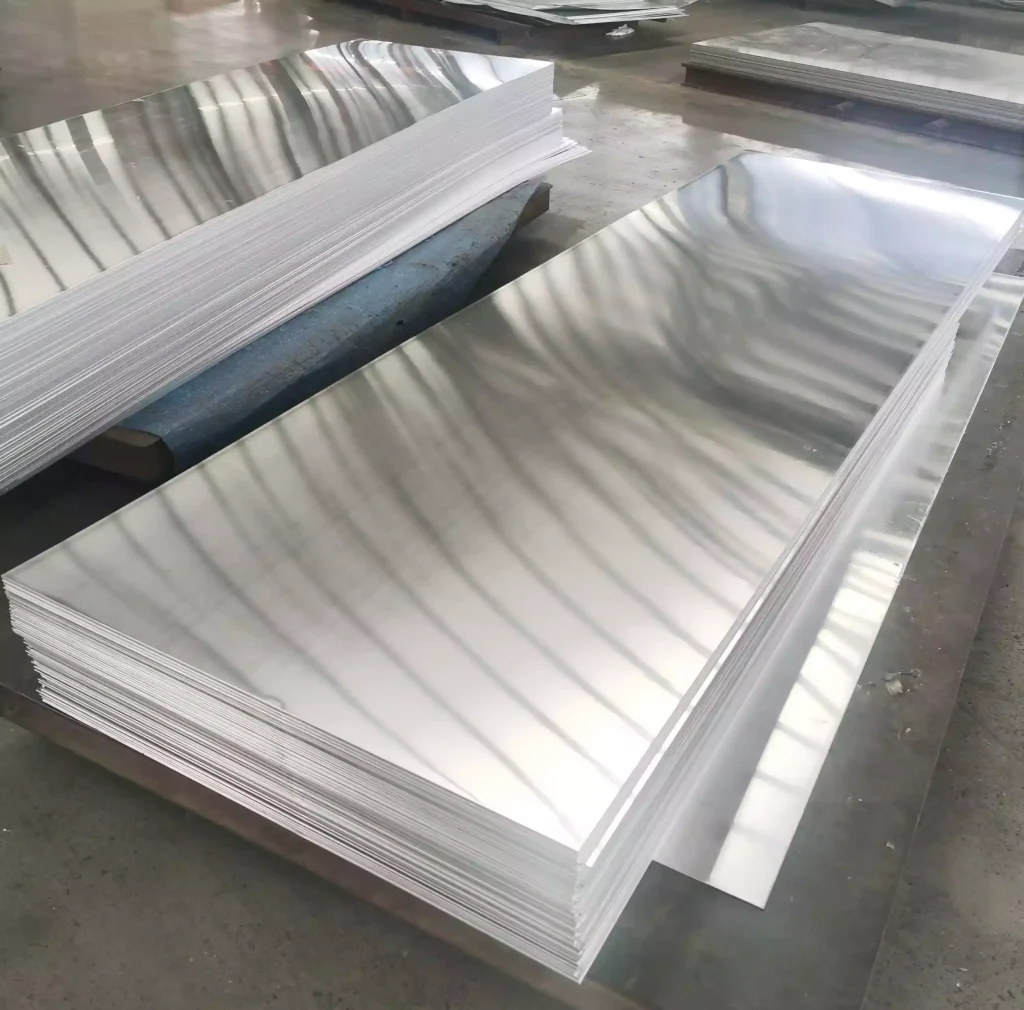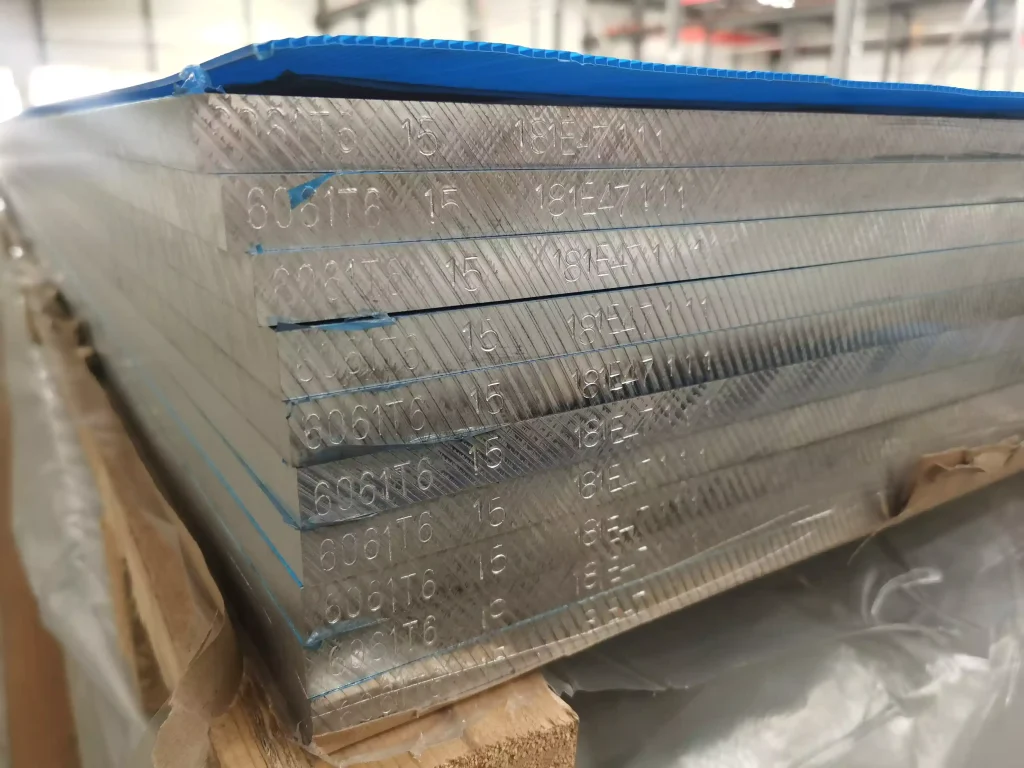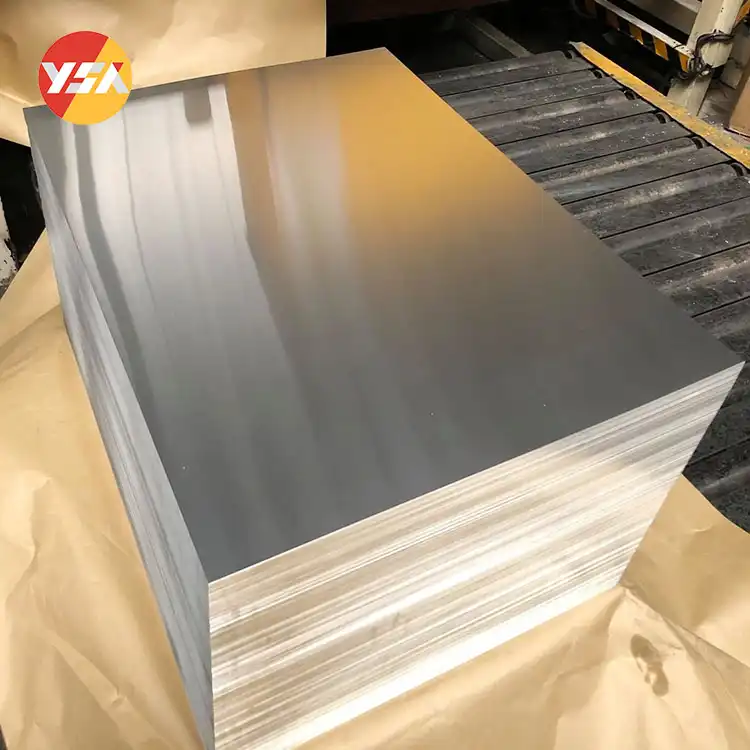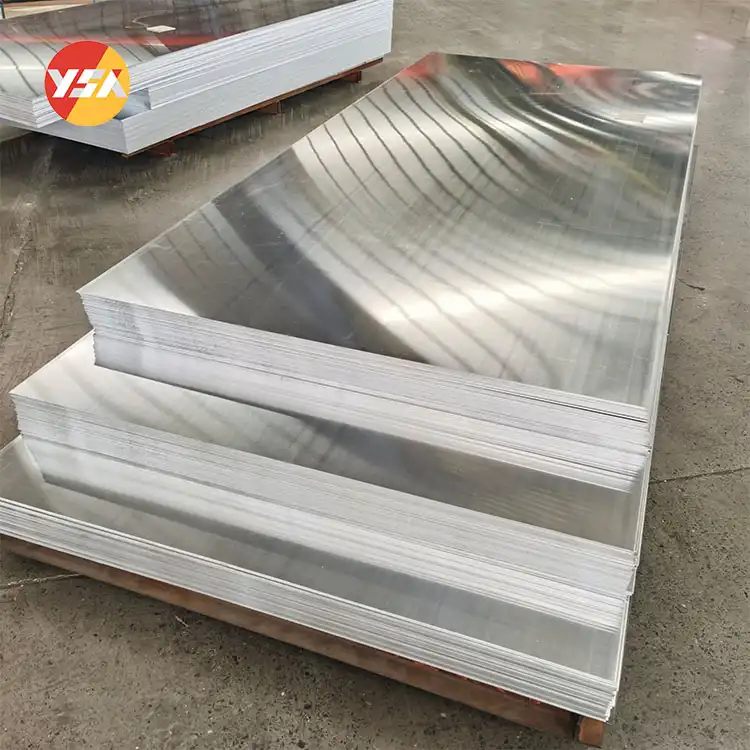Introduction of Aluminum Sheet
Aluminum sheets are flat pieces of aluminum that are extensively used in many kinds of industries owing to their exceptional characteristics. Aluminum, being a lightweight and versatile metal, provides numerous advantages over other materials. Aluminum sheets are valued for their high strength-to-weight ratio, corrosion resistance, electrical conductivity, thermal conductivity, and excellent formability. This article aims to compare and analyze the properties, differences, and applications of 6061 and 6063 aluminum sheets to determine which alloy is better suited for specific uses.

Properties of 6061 Aluminum Sheet
The exceptionally adaptable alloy 6061 aluminum sheet is known for its excellent mechanical qualities. It is ideal for demanding uses owing to its high strength, hardness, and toughness. The alloy is durable in many kinds of conditions due to its well-balanced hardness and modest level of corrosion resistance. The excellent heat treatability of 6061 aluminum, which enables large improvements in strength and hardness by heat treatment methods, is a noteworthy benefit. The exceptional weldability of 6061 aluminum also makes for seamless connections with other parts. Both its thermal and electrical conductivity are acceptable by requirements. Although 6061 aluminum sheet has a clean surface finish by default, it can be further improved utilizing a number of finishing procedures.

Properties of 6063 Aluminum Sheet
6063 aluminum sheet is another widely used alloy known for its favorable properties. It shares similarities with 6061 aluminum in terms of mechanical characteristics. It offers good strength, hardness, and toughness, although slightly lower than 6061. Corrosion resistance and durability are also notable features of 6063 aluminum, ensuring longevity in various conditions. While 6063 aluminum is not as heat treatable as 6061, it still exhibits acceptable heat treatability for specific applications. Weldability is a key advantage of 6063 aluminum, enabling efficient joining processes. In terms of electrical and thermal conductivity, 6063 aluminum provides satisfactory performance. The surface finish of 6063 aluminum sheet is typically smooth and lends itself well to decorative applications.
Comparison between 6061 and 6063 Aluminum Sheets
Comparison of Physical Properties
| Property | 6061 Aluminum Plate | 6063 Aluminum Plate |
| Density (g/cm³) | 2.7 | 2.68 |
| Melting Point (°C) | 582-651 | 606-655 |
| Thermal Conductivity (W/m·K) | 151-202 | 166-201 |
| Electrical Conductivity (% IACS) | 43-47 | 40-44 |
| Young’s Modulus (GPa) | 68.9 | 68.3 |
| Tensile Strength (MPa) | 240-310 | 130-230 |
| Yield Strength (MPa) | 170-260 | 55-200 |
| Elongation (%) | 8-25 | 12-25 |
| Hardness (HB) | 95 | 75 |
Comparison of Chemical Properties
| Property | 6061 Aluminum Plate | 6063 Aluminum Plate |
| Aluminum (Al) | 97.9-98.8% | 98.1-98.8% |
| Magnesium (Mg) | 0.8-1.2% | 0.45-0.9% |
| Silicon (Si) | 0.4-0.8% | 0.2-0.6% |
| Iron (Fe) | 0.7% max | 0.35% max |
| Copper (Cu) | 0.15-0.4% | 0.1% max |
| Zinc (Zn) | 0.25% max | 0.1% max |
| Manganese (Mn) | 0.15% max | 0.1% max |
| Titanium (Ti) | 0.15% max | – |
| Chromium (Cr) | 0.04-0.35% | – |
| Other Elements | – | 0.05% max (each), 0.15% max (total) |
Comparison of Basic Performance
When comparing 6061 and 6063 aluminum sheets, several key differences emerge. In terms of mechanical properties, 6061 aluminum generally offers higher strength, hardness, and toughness compared to 6063. However, 6063 aluminum still provides satisfactory performance for less demanding applications. In terms of corrosion resistance, both alloys exhibit good durability, but 6061 may have a slight advantage in harsh environments. Heat treatability is another factor to consider, with 6061 aluminum being more suitable for applications that require significant strength enhancements through heat treatment. Weldability is comparable between the two alloys, making them both suitable for fabrication processes. Regarding electrical and thermal conductivity, there is not a significant difference between 6061 and 6063 aluminum. Finally, in terms of surface finish and appearance, both alloys offer smooth finishes, but 6063 aluminum is often favored for decorative applications due to its enhanced aesthetics.
| Property | 6061 Aluminum Alloy | 6063 Aluminum Alloy |
| Strength | High strength, excellent tensile and yield strength | Lower strength compared to 6061 |
| Hardness | Good hardness and resistance to deformation | Satisfactory hardness |
| Toughness | Excellent toughness and impact resistance | Satisfactory toughness |
| Corrosion Resistance and Durability | Good corrosion resistance, suitable for many environments | Good corrosion resistance, suitable for many environments |
| Heat Treatability | Highly heat treatable, allows for improved strength and hardness | Less heat treatable, limited strength enhancements |
| Weldability | Excellent weldability, can be easily joined with other components | Excellent weldability, suitable for fabrication processes |
| Electrical Conductivity | Satisfactory electrical conductivity | Satisfactory electrical conductivity |
| Thermal Conductivity | Good thermal conductivity | Good thermal conductivity |
| Surface Finish and Appearance | Typically smooth surface finish | Typically smooth surface finish |
Applications of 6061 Aluminum Sheet
6061 aluminum sheet finds extensive use in various industries due to its excellent properties. In the aerospace industry, it is utilized in aircraft components, including wings, fuselages, and structural parts, thanks to its high strength and lightweight nature. The automotive sector benefits from 6061 aluminum in the manufacture of engine parts, wheels, and body panels, where its strength and corrosion resistance are crucial. Marine applications, such as boat hulls and masts, benefit from 6061 aluminum’s durability and resistance to saltwater corrosion. Additionally, 6061 aluminum is widely employed in structural components, such as beams, columns, and trusses, in construction and architectural projects due to its strength and ease of fabrication. Incidentally, 6082 aluminum sheet has similar properties to 6061 aluminum sheet and is also used in aerospace, transportation, and structural engineering, for example, in the manufacture of aircraft parts, ship components, and bridge structures.

Applications of 6063 Aluminum Sheet
6063 aluminum sheet is particularly favored in architectural applications, where its aesthetics and corrosion resistance are highly valued. It is commonly used for window and door frames, where its lightweight nature and surface finish contribute to the overall visual appeal of buildings. The malleability of 6063 aluminum allows for intricate designs and profiles, making it suitable for decorative elements like moldings and trim. In addition to its architectural uses, 6063 aluminum is also utilized in electrical enclosures, heat sinks, and piping systems due to its corrosion resistance and thermal conductivity. By the way, 6463 aluminum sheet in 6000 series aluminum plate is a similar alloy to 6063 aluminum sheet. They have similar corrosion resistance and machinability and are suitable for similar applications, such as the construction and decorative industries.

Summary
In conclusion, both 6061 and 6063 aluminum sheets offer distinct advantages and find applications across various industries. 6061 aluminum excels in applications that require high strength, durability, and heat treatability, such as aerospace, automotive, and structural components. On the other hand, 6063 aluminum’s strengths lie in its corrosion resistance, surface finish, and decorative capabilities, making it an ideal choice for architectural and decorative applications. Determining which alloy is better suited for specific uses ultimately depends on the specific requirements of the application at hand. Regardless of the choice, aluminum sheets, in general, play a vital role in multiple industries, offering a lightweight, durable, and versatile material for diverse applications.


